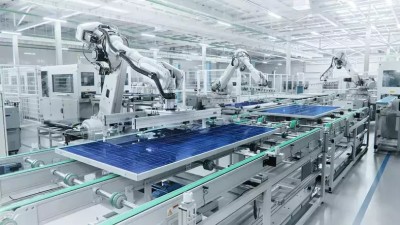The capacity for manufacturing solar cells in India is
likely to drastically grow due to the extension of the Approved Models and
Manufacturers List (ALMM) by the government to the solar cells starting from
June 2026 This change in policy is intended to increase the local production of
solar cells in response to the massive increase in demand for solar power and
renewable energy in the country. As per CRISIL estimates, local manufacturing
capacity will increase from 10 GW in March 2024 to 43-47 GW by June 2026 owing
to government measures like the PLI scheme. The biannual average demand of
Solar Modules between the years 2027 and 2030 is expected to be about 40-45 GW,
which also makes a case to enhance domestic production capacity in order to
fulfill these rising demands.
The introduction of the ALMM list, which extends to solar
cells, is likely to have a transformative impact on the renewable energy (RE)
sector in India. By mandating that only solar cells listed in the ALMM are
eligible for use in government-backed solar projects, the policy aims to ensure
higher quality and reliability in solar installations. This move will likely
encourage more investments in the domestic manufacturing sector, leading to job
creation and technological advancements. It will also protect local
manufacturers from the volatility of global supply chains, ensuring more stable
and secure supply lines for solar developers. Additionally, the mandate could
drive the industry towards greater self-reliance, as companies will be forced
to either develop their own manufacturing capacity or face supply shortages,
thereby fostering the growth of integrated domestic manufacturing capabilities.
While the extension of the ALMM to solar cells is expected
to accelerate domestic manufacturing, it may also result in higher costs for
solar power projects, at least in the short term. Domestic solar cells
currently cost 1.5-2 times more than imported alternatives, particularly those
from China. As a result, the higher capital expenditure required to use
domestically manufactured cells could push up the overall cost of solar
projects by ₹5-10 million per MW. This increase in capital costs would likely translate
to higher tariffs at solar auctions, possibly requiring a tariff hike of 40-50
paise per unit to offset the added expenses. Although the domestic supply chain
will eventually catch up, these transitional price impacts may create
challenges for developers in the early stages of the ALMM implementation.
The benefits of domestic production of solar cells are
significant for India’s renewable energy sector and the broader economy. First,
domestic manufacturing enhances energy security by reducing reliance on foreign
suppliers, particularly in the face of global supply chain disruptions.
Additionally, it can create a robust local industry, generating employment and
fostering technological innovation. Data suggests that integrated
cell-to-module plants typically enjoy 2-6 percentage points higher EBITDA margins
than standalone module assembly plants. Domestic production also shields the
country from global supply shocks and allows Indian manufacturers to better
compete in international markets, especially in regions like the US, where the
lack of upstream components drives module prices higher. Furthermore, the
production-linked incentives (PLI) scheme and non-tariff barriers provide a
supportive environment for manufacturers to scale operations and boost exports.
The ALMM list offers significant opportunities for both
established and emerging players in the solar manufacturing and energy sectors.
For domestic manufacturers, particularly those with integrated cell-to-module
plants, the policy creates a secure market for their products, enabling them to
scale up production in line with growing demand. For companies currently
relying on imported cells, the list presents an opportunity to either invest in
domestic manufacturing capabilities or forge partnerships with local
manufacturers to ensure compliance with the ALMM requirements. Additionally,
new entrants to the solar cell manufacturing market, including those that have
announced plans to build large-scale capacity, stand to benefit from government
incentives like the PLI scheme, positioning them to capture a share of both the
domestic and export markets. This creates a competitive yet growth-oriented
environment for the industry, pushing the sector towards innovation,
sustainability, and greater self-reliance.




